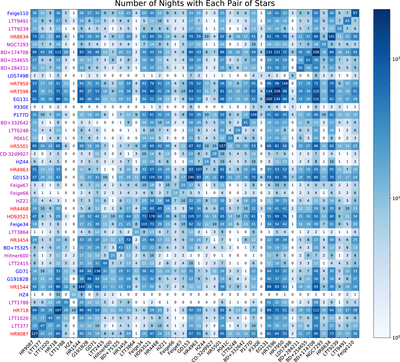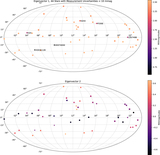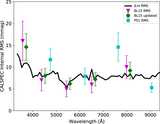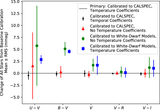Image Details

Caption: Figure 4.
Array showing the number of times different pairs of stars were observed on the same photometric night. The stars are ordered by R.A. and color coded (primary CALSPEC in blue, long-exposure secondaries in magenta, and short-exposure secondaries in red). Four stars observed on fewer than five nights are included in our analysis, but removed from this figure for clarity. Note that the plot is symmetric. Some seasonal structure exists, but overall our standard-star network is knit together quite well. Groupings of bright and faint stars result from our method for observing standard stars during twilight, with brighter stars observed when twilight is brighter and fainter stars observed when twilight is fainter or between the end and start of astronomical twilight.
Copyright and Terms & Conditions
© 2022. The Author(s). Published by the American Astronomical Society.












